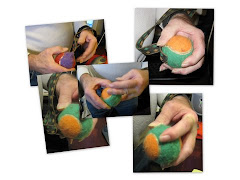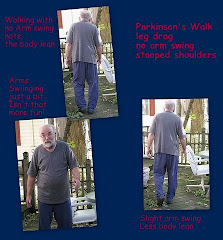We all know about the Fire Triangle. That group of three elements which need to be present for fire: heat, fuel and an oxidizing agent which is usually oxygen. Yes there are also fire squares and tetrahedrons but lets look at how the basic triangle relates to Parkinson's. When you add the chemical reaction to the triangle you have fire. When Fire Investigators look at what's left after a fire they look for the cause and origin, the way the combination of elements led to the combustion.
In Parkinson's disease researchers know that the death of the dopamine producing neurons in the substantia nigra (SN) cause PD but until now, they have not known what caused the cell death. Although knowing that cause may not provide the all answers to the origin, at least it is a significant area for continued investigation and development.
So what has happened in the last few months? Researchers have learned that an imbalance in the PD triangle of alpha synuclein, calcuim channels and cytosolic dopamine itself can lead to the premature death of the dopamine neurons. Imagine a cell - in this case a neuron or nerve cell which can transmit information by electrochemical signaling - it has assigned places for each task. But what if one team member doesn't want to wait in the correct place? When things don't work the way they are supposed to work, there can be a serious problem.
What these scientific investigators found was that just as there is good cholesterol and bad colesterol there can be good dopamine and bad dopamine or at least badly behaved dopamine. Although the why is not known yet, what is known in the new study is that it is about location, location, location. Dopamine must be contained within a specific area of the cell and not venture out too early. Where and when the dopamine is within the neuron will be the deciding toxicity factor because if it moves from the inner part of the cell, the synaptic vesicle, to the outer cytoplasm, where dopamine combines with (calcium and) a-syn to become a toxic gunk. Since the cell cannot properly get rid of this mess...Is it the excess calcium which triggers the premature action potential?
So how to get the dopamine to remain within its inner area of the cell until the right time is the question for researchers. And there is updated information coming in 2010.
Addendum:
The player we didn't mention is DOPAL the MAO metabolite of dopamine. DOPAL is a natural toxin which has recently be found in higher levels in PwPs (people with Parkinson's).
Apparently 3,4-dihydroxyphenylacetaldehyde or DOPAL causes alpha-synuclein to aggregate or clump. This would explain part of the problem. A question raised is the relationship of DOPAL to ROS or reactive oxygen species.
Natural Toxins Implicated in the Development of Parkinson's disease
Resources and related info:
http://www.medicalnewstoday.com/articles/148270.php
http://www.sciencedirect.com/science?_ob=ArticleURL&_udi=B6WSS-4W5VS0G-3&_user=10&_rdoc=1&_fmt=&_orig=search&_sort=d&view=c&_acct=C000050221&_version=1&_urlVersion=0&_userid=10&md5=584119172539790fca9149456494469d
The Abstract:
http://www.sciencedirect.com/science?_ob=ArticleURL&_udi=B6WSS-4W5VS0G-B&_user=10&_coverDate=04%2F30%2F2009&_rdoc=1&_fmt=high&_orig=browse&_cdi=7054&_sort=d&_docanchor=&view=c&_ct=1&_refLink=Y&_acct=C000050221&_version=1&_urlVersion=0&_userid=10&md5=d80d423c21d954c84c93716328fd07dc
Synucleinopathy:
http://www.pubmedcentral.nih.gov/articlerender.fcgi?artid=1510951
http://www.nbhope.org/blogs/neuroblastomaresearch/archive/2009/04/21/a-cell-based-model-of-alpha-synucleinopathy-for-screening-compounds-with-therapeutic-potential-of-parkinson-s-disease.aspx
How the brain works:
http://www.aolhealth.com/alzheimers/learn-about-it/how-the-brain-works/a-micro-view-of-the-brain
A glossary of visual links:
How neurotransmitters work:
http://faculty.washington.edu/chudler/chnt1.html
Action potential:
http://faculty.washington.edu/chudler/chmodel.html
Nerve cell transmission:
http://teens.drugabuse.gov/mom/tg_nerves.php
Neurons, synapses, action potentials and transmission of impulses:
http://www.mind.ilstu.edu/curriculum/neurons_intro/neurons_intro.php
Cells, Genes, Functional Genomics and Microarrays
http://www.ebi.ac.uk/microarray/biology_intro.html













